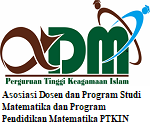Identification COVID-19 Cases in Indonesia with The Double Exponential Smoothing Method
DOI:
https://doi.org/10.15642/mantik.2020.6.1.66-75Keywords:
Time series; COVID-19; Double Eksponensial Smoothing; ARIMAAbstract
The time-series approach is a method used to analyze a series of data in a time sequence to estimate the value of a series in the future. This article will identification the COVID-19 case model in Indonesia using the Double Exponential Smoothing Method. The Double Exponential Smoothing method is one method that can be used to optimize the estimation of the ARIMA model with smoothing parameters α. The data used is sourced from the National Disaster Management Agency which was released starting March 2, 2020. Based on the results of PACF, ACF, and estimated parameters of the ARIMA model in the Covid-19 case in Indonesia following the ARIMA model (0,1,1).
Downloads
References
Y. Yuliana, “Corona virus diseases (Covid-19): Sebuah tinjauan literatur. Wellness And Healthy Magazine, Vol. 2, No. 1, pp. 187 – 192, February 2020. Retrieved from https://wellness.journalpress.id/wellness/article/view/21026
Worldometer, “Covid-19 Coronavirus Pandemic”, worldometer, 2020. [Online], Available: https://www.worldometers.info/coronavirus/country/indonesia/, (Accessed: April 6, 2020.
A. M. Idhom, “Update Corona 6 April 2020 Indonesia & Data Covid-19 Dunia Terbaru”, tirto.id. [Online]. Available: https://tirto.id/update-corona-6-april-2020-Indonesia-Data-COVID-19-Dunia-Terbaru-eLk5. (Accessed: April 7, 2020).
Badan Nasional Penanggulangan Bencana, “Jumlah Kasus COVID-19 Global dan Indonesia”, Gugus Tugas Percepatan Penanganan COVID-19. [Online]. Available: http://covid19.bnpb.go.id/. (Accessed: April 7, 2020).
S. Supriyono, S. Siswanto, and W. Wuryanto, "Model Matematika Penyebaran Flu Burung dari Unggas," Unnes Journal of Mathematics, vol. 2, no. 1, pp. 32-38, May 2013.
S. Toaha and K. Khaeruddin, "Model Sir Untuk Penyebaran Penyakit Flu Burung", Jurnal Matematika, Statistika, dan Komputasi, vol. 10, no. 2, pp. 82-91, January 2014.
J. T. Wu, K. Leung, and G. M. Leung, "Nowcasting and forecasting the potential domestic and international spread of the 2019-nCoV outbreak originating in Wuhan, China: a modeling study," THE LANCET, vol. 395, issue 10225, pp. 689-697, February 29, 2020. DOI:https://doi.org/10.1016/S0140-6736(20)30260-9
Q. Lin, et al., "A conceptual model for the coronavirus disease 2019 (COVID-19)outbreak in Wuhan, China with individual reaction and governmental action," International Journal of Infectious Diseases, vol. 93, pp. 211-216, April 2020. DOI:https://doi.org/10.1016/j.ijid.2020.02.058
Y. Li, et al., "Mathematical Modeling and Epidemic Prediction of COVID-19 and Its Significance to Epidemic Prevention and Control Measures," Annals of Infectious Disease and Epidemiology, vol. 5, issue 1, pp. 1-9, Mar 2020.
S. Makridakis, Metode dan Aplikasi Peramalan Jilid 1 (Edisi Revisi). Jakarta: Binarupa Aksara, 2003.
Downloads
Published
How to Cite
Issue
Section
License
- Authors retain copyright and grant the journal right of first publication with the work simultaneously licensed under a Creative Commons License that allows others to share the work with an acknowledgment of the work's authorship and initial publication in this journal.
- Authors are able to enter into separate, additional contractual arrangements for the non-exclusive distribution of the journal's published version of the work (e.g., post it to an institutional repository or publish it in a book), with an acknowledgment of its initial publication in this journal.
- Authors are permitted and encouraged to post their work online (e.g., in institutional repositories or on their website) prior to and during the submission process, as it can lead to productive exchanges, as well as earlier and greater citation of published work







.png)




